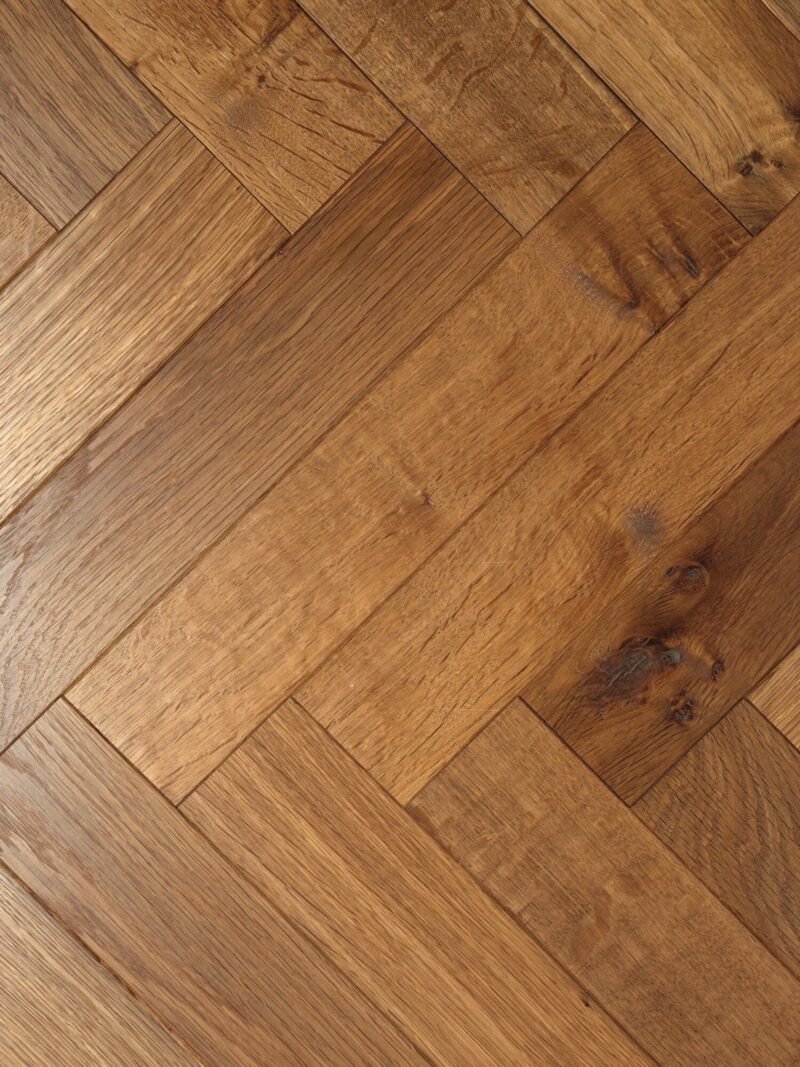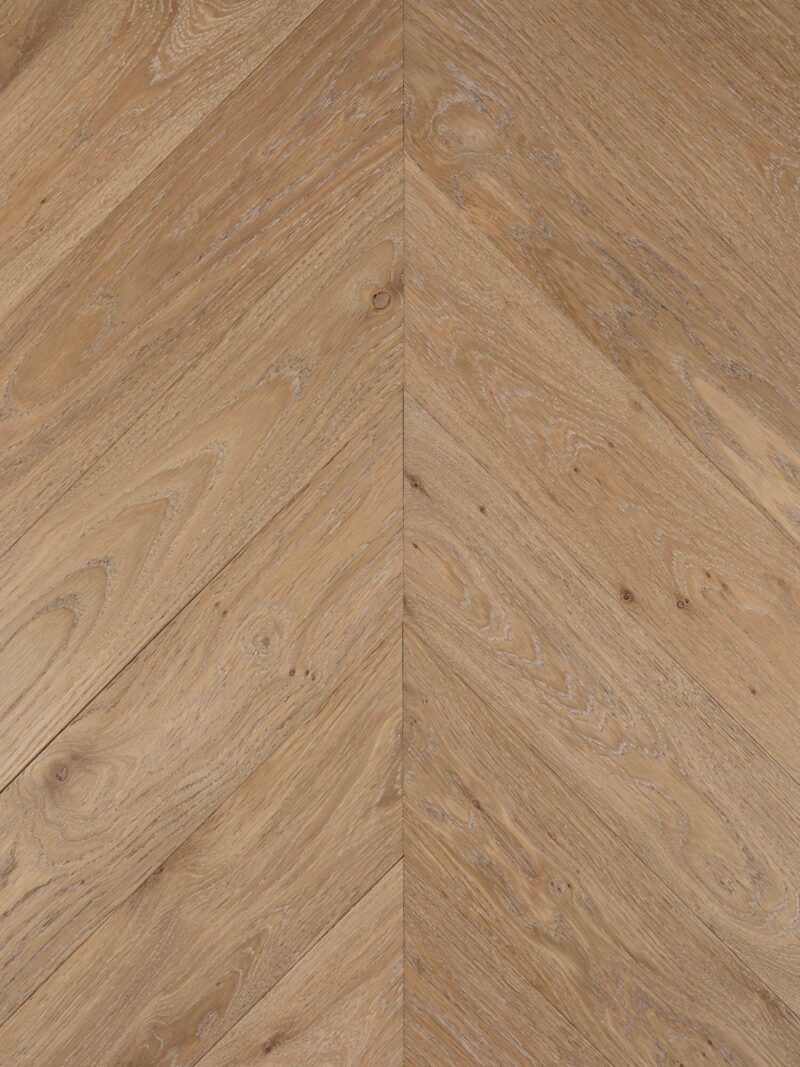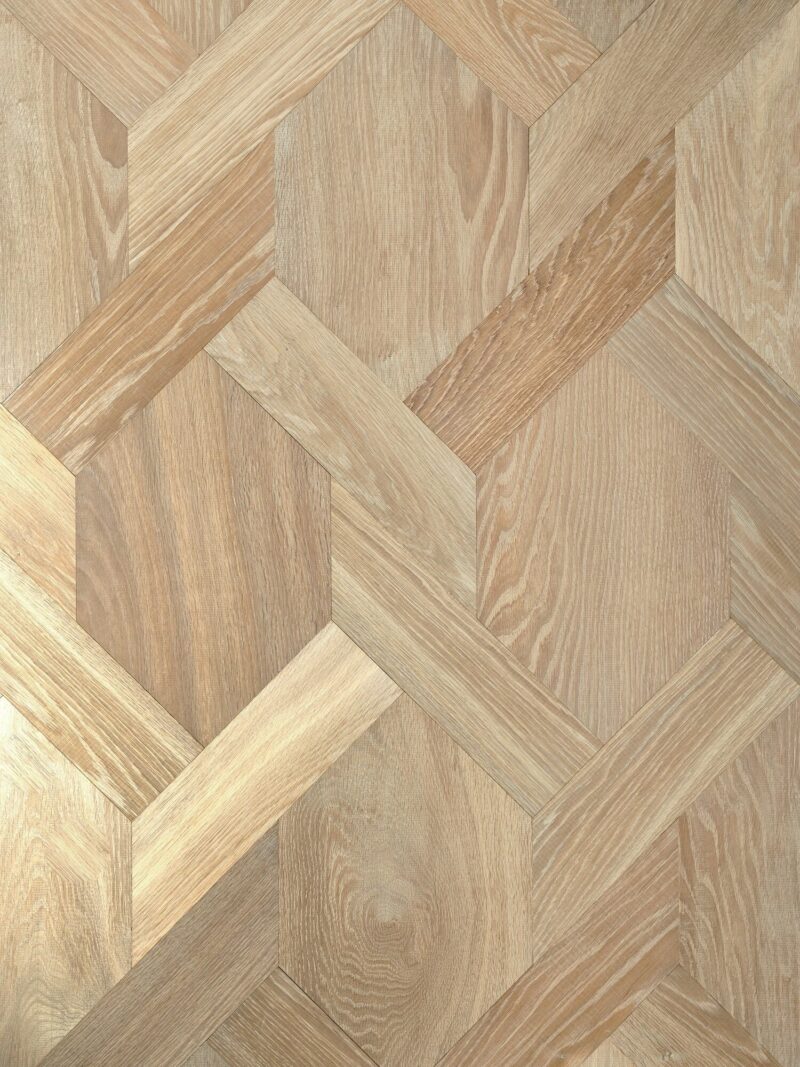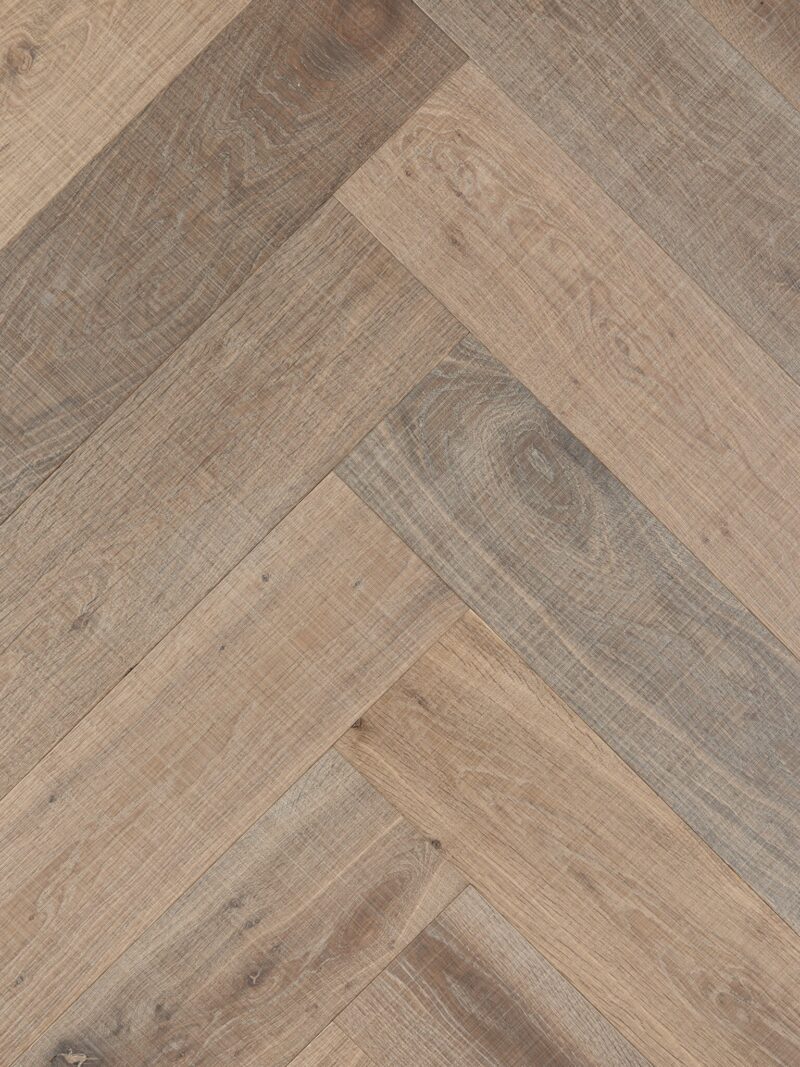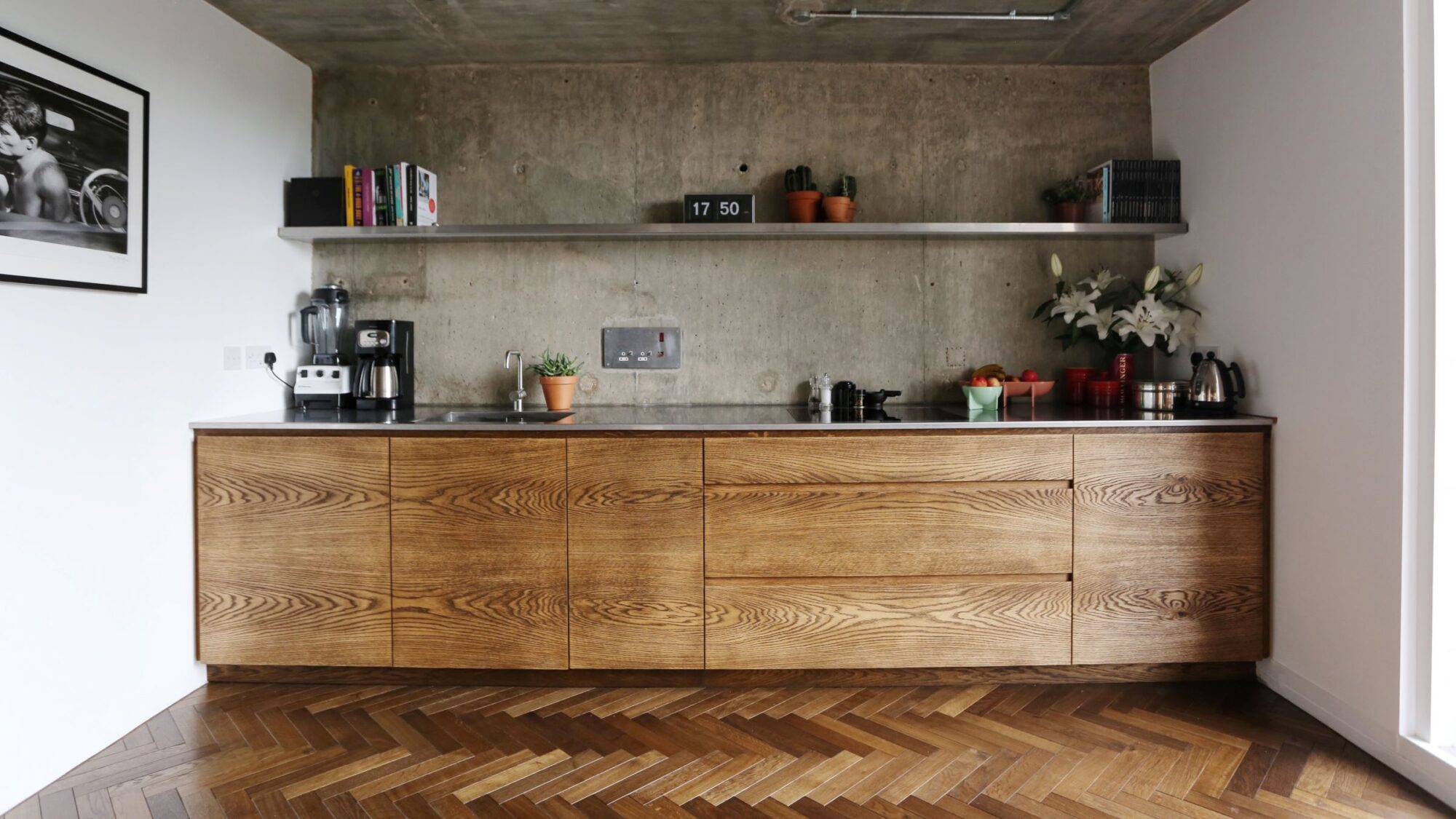
Landmark Derrymore in the Trellick Tower - photo credit: Elyse Kennedy, The Modern House
Parquet flooring has experienced quite the renaissance in the last few years and there are different ways to make this old favourite look modern. Defined simply as timber flooring composed of wood blocks or “battens” laid in geometric patterns, parquet flooring has a long, esteemed history. Although its popularity waned in the last half of the twentieth century, its use, whether it is herringbone, chevron, or other patterns, has become increasingly popular in recent years. This revival, however, has shown modern parquet to depart from its earlier use and application in several distinct ways.
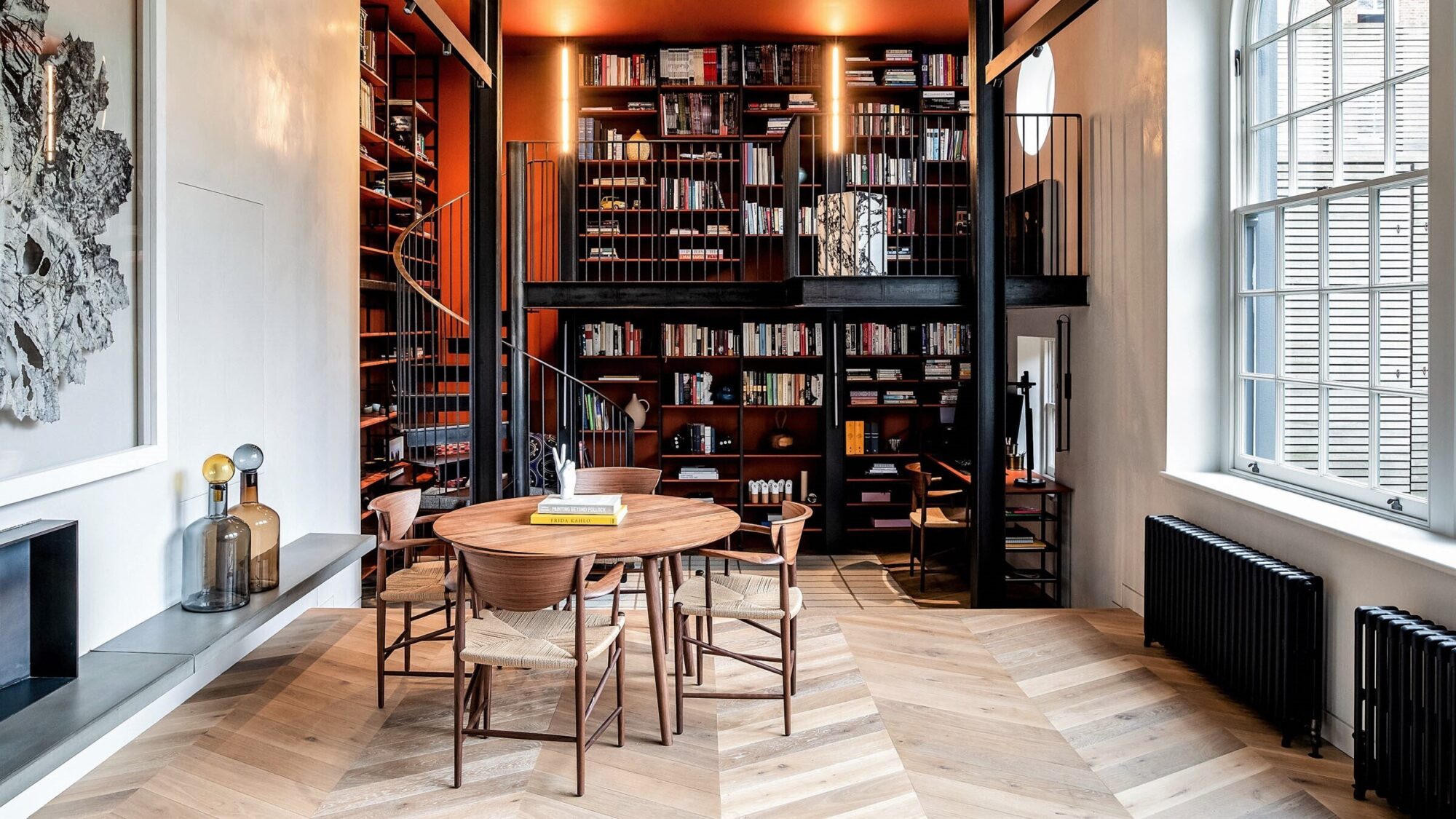
Strata Hurst in chevron for a mews house conversion by Michaelis Boyd: photo credit: Taran Wilkhu
Prefinished modern parquet flooring
The first thing that sets modern timber parquet flooring apart from its predecessors is the fact that the majority of it today is prefinished, that is, it receives its final colour and seal in the factory where it is produced. Years ago, parquet was only available unfinished, which meant that once it was fitted, it then needed to be sanded and then sealed on site. This took time, as well as labour, which meant that a parquet floor was always relatively expensive. Pre-finishing brought installation costs down, which has made modern parquet accessible to a wider selection of homeowners.
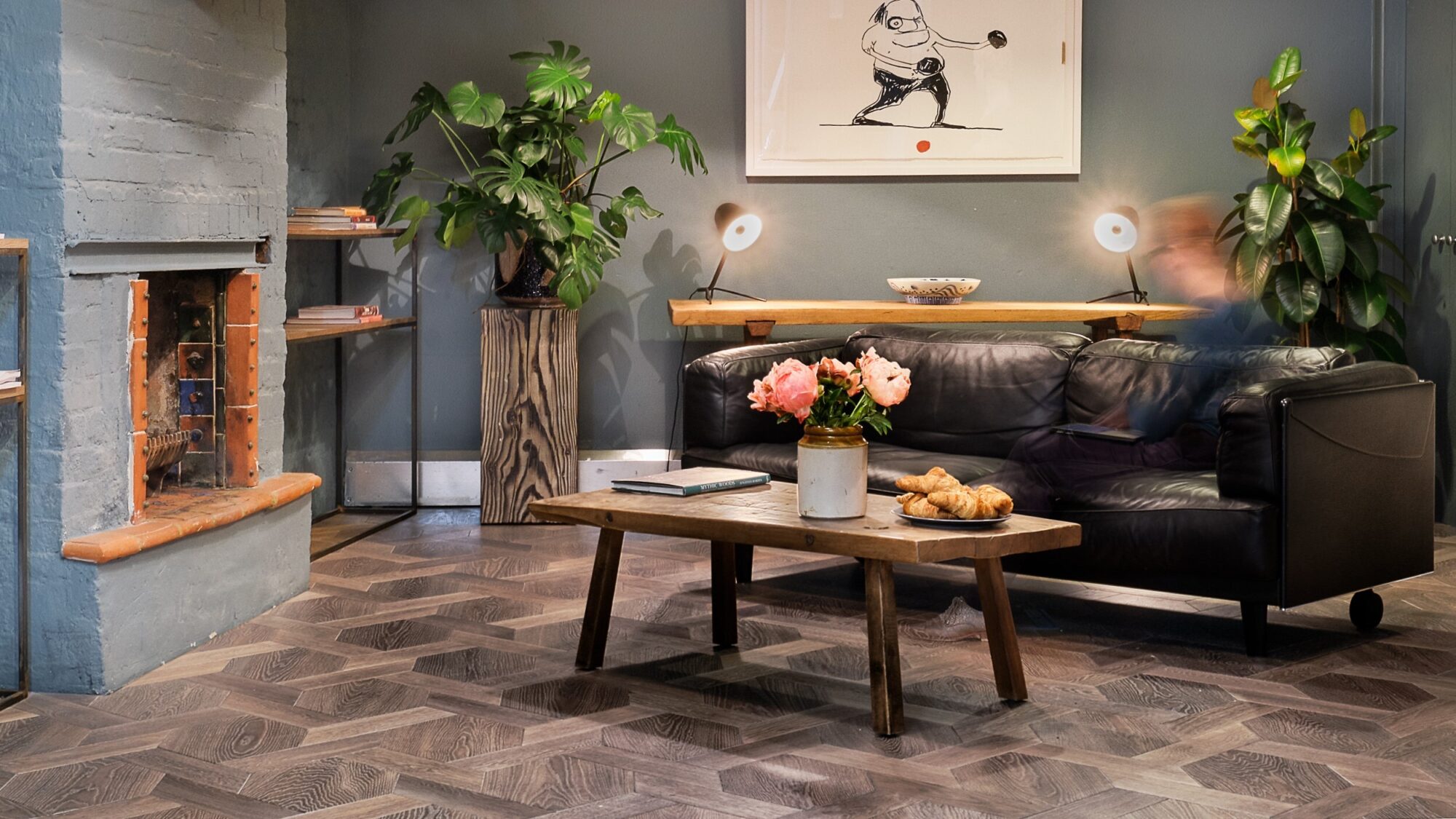
Landmark Scotney in mansion weave in Solid Floor EAST showroom - photo credit: Jack Kitchen
Contemporary use of parquet
Years ago, parquet for residential use was a formal, stuffy old-fashioned type of flooring. Considered solely for use in conjunction with academic mouldings and pedantic boiserie, it was reserved exclusively for the best rooms, the entrance hall and the formal reception rooms, with each of these areas often encased in an elaborate border. The contemporary use of parquet has swept away all such conventions, and what is notable now is its use in settings that would never have been considered in the past. These days, we see chevron used in modern kitchen diners as frequently as in foyers. We install herringbone in converted warehouse and loft spaces. We fit Versailles panels in two-up-two-down Victorian workers’ cottages. There are no longer any rules about where parquet is appropriate or inappropriate.
When borders are used, they are, by and large, simpler, less fussy affairs, without intricate inlay set out in the dizzying designs so often seen in the past. Current practice, however, is running towards forgoing the use of borders altogether in all but the more traditional spaces, the parquet flowing wall to wall and room to room. While a parquet border is a jolly nice feature in an entrance, where it can be appreciated (and seen!), it becomes an encumbrance in a kitchen, what with islands and various appliances jockeying for space.
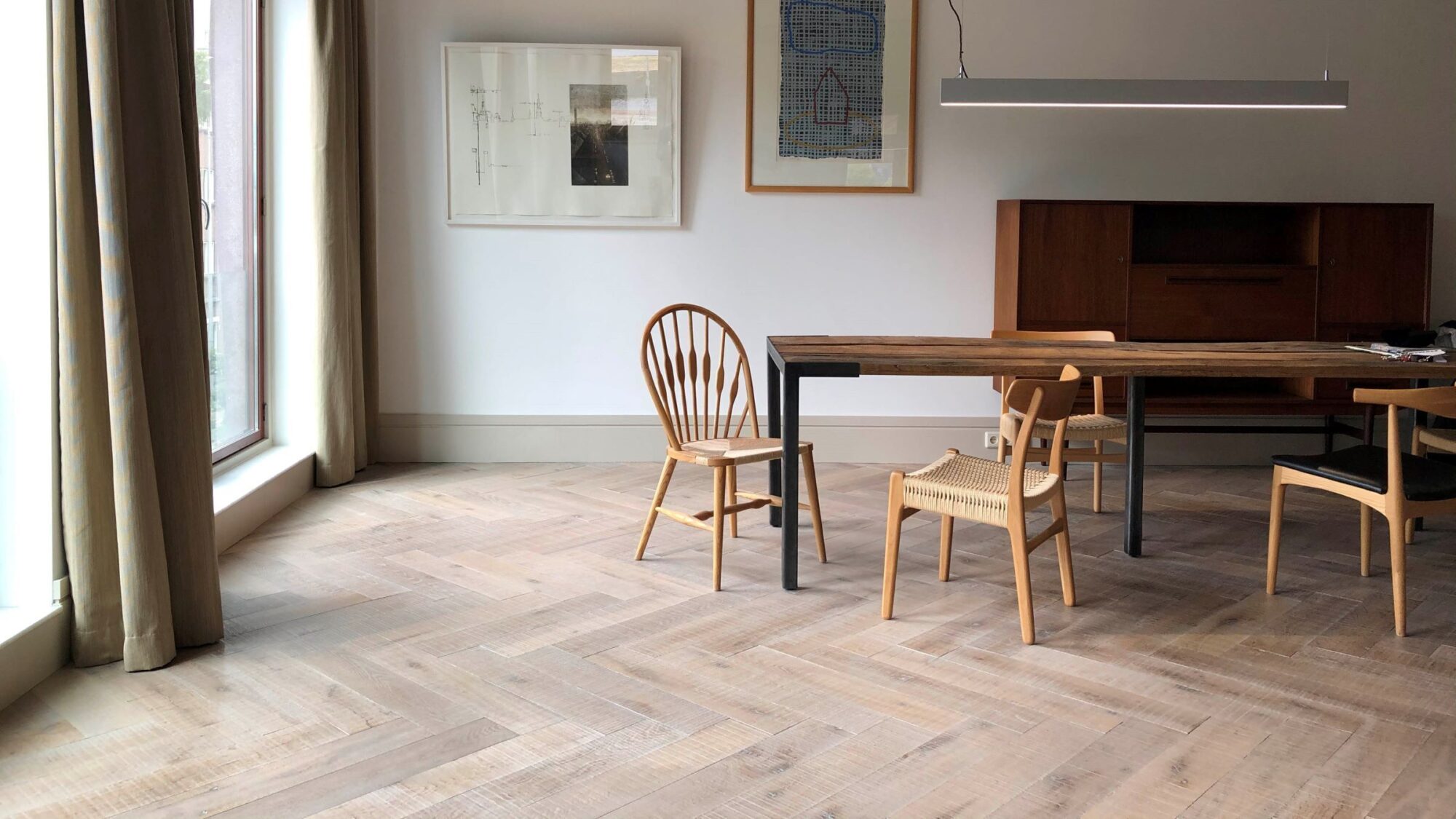
Tate Bute with heavy saw marks in a new-built apartment - photo credit: Eelke Jan Bles
Modern parquet's wide variety of finishes and sizes
Modern timber parquet can best be characterised by its sheer variety. Whereas in the old days, you were limited to the colour of the wood itself once it was varnished and waxed on-site, nowadays, due to the factory finishing, you can have your parquet in a panoply of colours and effects, from white to black and nearly anything in between. Processes such as fuming, combined with colour oils and reactive stains, produce myriad shades and effects that earlier generations could only have dreamed of.
Additionally, parquet today is seen in a greater variety of sizes than historically. Whereas years ago, a herringbone floor was only available in one size batten, we now routinely offer a choice of five sizes. For instance, oversized herringbone and chevron floors are currently all the rage. Individual battens 600-700mm long are not uncommon, and even longer are available (we can produce battens up to 925mm long).
Perhaps the most notable characteristic of modern parquet is it being produced in textures and finishes that would never have been considered traditionally. For instance, we produce all of our parquet patterns in the oak Tate finish, characterised by prominent, parallel bands of saw marks, something generally considered “industrial” in its look. This juxtaposition, the formal, refined, traditional parquet pattern against the seemingly incongruous, rough-finished material in which it is realised, is what produces that frisson of excitement, the thrill of modern design.
